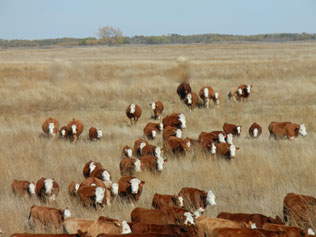Some common health concerns that you should make sure your breeder has done:
CNM- Info
Centronuclear Myopathy (CNM) in Labrador Retrievers is a hereditary myopathy characterized by skeletal muscle problems such as muscle weakness and exercise intolerance. It is also known as hereditary myopathy of the Labrador Retriever (HMLR).
The mutation, or change to the structure of the gene, probably occurred spontaneously in a single dog but once in the population has been inherited from generation to generation like any other gene. The disorder shows an autosomal recessive mode of inheritance: two copies of the defective gene (one inherited from each parent) have to be present for a dog to be affected by the disease. Individuals with one copy of the defective gene and one copy of the normal gene - called carriers - will not get the disease, but can pass the defective gene onto their offspring. When two apparently healthy carriers are crossed, 25% (on average) of the offspring will be affected by the disease, 25% will be clear and the remaining 50% will themselves be carriers
The mutation responsible for this disease has been identified by a research group in France. Using the information from their research, researchers have developed a DNA test for the disease. This test not only diagnoses dogs affected with this disease but can also detect those dogs which are carrier or clear from the disease. Under most circumstances, there will be a much greater number of carriers than affected animals in a population. .
CLEAR: the dog has 2 copies of the normal gene and will neither develop CNM, nor pass a copy of the CNM gene to any of its offspring.
CARRIER: the dog has one copy of the normal gene and one copy of the mutant gene that causes CNM. It will not develop CNM but will pass on the CNM gene to 50% (on average) of its offspring.
AFFECTED: the dog has two copies of the CNM mutation and is affected with CNM. It will develop CNM at some stage during its lifetime, assuming it lives to an appropriate age. Their muscles will weaken and seperate and they will lose control of their limbs, usually the hind end
Carriers can still be bred to clear dogs. On average, 50% of such a litter will be clear and 50% carriers; there can be no affecteds produced from such a mating. Pups which will be used for breeding can themselves be DNA tested to determine whether they are clear or carrier.
Thanks to DNA testing( a simple cheek swab), breeders can now test their dogs before breeding or choosing a mate for breeding to make sure that this awful disease dissipates and all our labs live a long and healthy life.
EIC Info
EIC is an autosomal recessive syndrome. To be affected, a dog must have received the mutated version of the EIC gene from both parents.
A syndrome of exercise intolerance and exercise induced collapse (EIC) is being observed with increasing frequency in young adult Labrador retrievers. It has also been observed in Chesapeake Bay retrievers and curly-coated retrievers. Affected dogs have been found in field-trial, hunt test, conformation, pet, and service lines. Black, yellow, and chocolate Labradors of both sexes are affected, with the distribution of colors and sexes closely reflecting the typical distribution in the population. Signs first become apparent in young dogs, usually between 5 months and 3 years of age (averaging 14 months). In dogs used for field trials, this usually coincides with the age at which they enter heavy training. Littermates and other related dogs are commonly affected, but depending on their temperament and lifestyle, they may or may not manifest signs. Affected dogs exhibiting signs of collapse are usually described as being extremely fit, muscular, prime athletic specimens of their breed with an excitable temperament and lots of drive.
Affected dogs can tolerate mild to moderate exercise, but 5 to 20 minutes of strenuous exercise with extreme excitement induces weakness and then collapse. Severely affected dogs may collapse whenever they are exercised to this extent; other dogs only exhibit collapse sporadically. The factors important in inducing an episode can vary among dogs. The first thing noted is usually a rocking or forced gait. The rear limbs then become weak and unable to support weight. Many affected dogs continue to run while dragging their back legs. Some of the dogs appear to be incoordinated, especially in the rear limbs, with a wide-based, long, loose stride rather than the short, stiff strides typically associated with muscle weakness. In some dogs, the rear limb collapse progresses to forelimb weakness and occasionally to a total inability to move. Some dogs appear to have a loss of balance and may fall over, particularly as they recover from complete collapse. Most collapsed dogs are totally conscious and alert, still trying to run
and retrieve, but affected dogs can appear stunned or disoriented during the episode. It is common for the signs to worsen for three to five minutes even after exercise has been terminated. Most dogs recover quickly and are normal within 5 to 25 minutes with no residual weakness or stiffness. Dogs are not in pain during the collapse or after recovery. Affected dogs are not stiff or sore or limping upon recovery.
A few affected dogs have died during exercise or while resting immediately after an episode of EIC, so an affected dog's exercise should always be stopped at the first hint of in-coordination or wobbliness.
Factors contributing to collapse in dogs with EIC
Ambient temperature
The ambient temperature does not seem to be a critical factor contributing to collapse, but if the temperature is much warmer or the humidity is much higher than the dog is accustomed to, collapse may be more likely. Affected dogs are less likely to collapse while swimming than when being exercised on land. There are severely affected dogs, however, who have exhibited collapse while breaking ice retrieving waterfowl in frigid temperatures, and some dogs have drowned when experiencing EIC-related collapse in the water.
Excitement
Dogs that exhibit signs of EIC are most likely to have intense, excitable personalities, and it is very apparent that their level of excitement plays a role in inducing the collapse. There are some severely affected dogs who require very little exercise to induce the collapse. Dogs with EIC are most likely to collapse when engaging in activities that they find very exciting or stressful. This can include retrieving of live birds, participation in field trials, training drills with electric collar pressure, and quartering for upland game.
Type of exercise
Routine exercise like jogging, hiking, swimming, most waterfowl hunting, and even agility or fly ball training may not induce an episode in dogs with EIC. Activities with continuous, intense exercise, particularly if accompanied by a high level of excitement or anxiety, most commonly cause collapse. Activities commonly implicated include grouse or pheasant hunting, repetitive "happy retrieves," retrieving drills or repetition of diffi cult marks or blinds where the dog is being repeatedly corrected or is anticipating electric collar correction, and running alongside an ATV.
Clear
A dog that has two copies of the normal version of the EIC gene. Clear dogs will pass on the normal version of the gene to all of their offspring.
Carrier
A dog that has one copy of the normal EIC gene and one copy of the mutated EIC gene. The dog will not get the disease, but on average, carrier dogs will pass on the mutated copy of the EIC gene to half of their offspring. By mating a carrier dog to a clear dog, you will, on average, produce litters that are 50 percent clear and 50 percent carriers, with no affected.
Affected
A dog that has two copies of the mutated EIC gene. These dogs are susceptible to collapse episodes under their “trigger” conditions. An affected dog will pass on the mutated EIC gene to all of its offspring. By mating an affected dog to a clear dog, you will produce a litter that is made up of 100 percent carrier offspring ― no clears, but also no affected. Under no circumstances should you breed an affected to an affected.
Thanks to researchers, a DNA test (check swab) can detect the presence of the gene, enabling responsible breeding practices to eliminate this disease over time.
When purchasing a pup, please be sure to ask if the dogs have been tested for CNM and EIC and get a copy of the results for verification.







